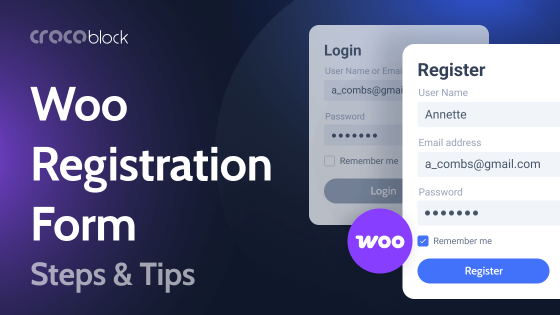Domain Authority, or DA, offers one way of monitoring a website’s performance. The theory is that websites with the highest DA scores also enjoy the highest ranks on the SERPs. Is that true, though?
This article will explain what Domain Authority is and why it’s so important even though Google says its algorithm doesn’t have a DA signal. I’ll also take you through six proven methods that will boost the DA of your site.
Table of Contents
What is Domain Authority, and How does it Work?
Domain Authority refers to the overall authority or strength of a website measured on a scale of 0-100. Moz was the first company to introduce the concept of DA, though several SEO tools are now using it. You can use your score to judge how likely a new piece of content will appear on the first page of the search results.
NOTE:
While Google does not recognize DA as a ranking factor, it is still a pretty good indicator of your page’s performance in search engine results.

You should always compare your DA to your niche competitors. For some niches, a low DA will be enough to get you to the front page of the search results. In a competitive niche, though, you need more authority to appear on the first page of Google.
That’s why you should first do your keyword research, review the DA of sites appearing on the first page of Google, and see what makes them work. They will probably have many backlinks coming from websites with the same or higher domain authority in their niche. In addition, they might have some high-performing content that generates high organic traffic.
Now let’s get practical and see how to improve the domain authority.
Read also: 9 tips to achieve a perfect score when performing a WordPress health check
Six Ways to Boost Domain Authority
Boosting domain authority takes time. The strategies I’m about to share should be part of a long-term marketing strategy. With that in mind, here are six ways to boost your domain authority:
Link building campaigns
The best way to increase your DA is to run link-building campaigns. You can do a link insert campaign or a guest post-campaign. You can run these three campaigns separately or concurrently.
With link inserts, you ask the site editor to include your link in a contextually relevant piece of content. Here are the three most common link insert campaigns:
- Ask for a link: If you wrote a great guide about guest posting, you’d ask anyone who mentioned guest posting to include a link to your site.
- Link mentions: If someone mentions your company in a piece of content, you ask them to link to your site.
- Broken link building: Sometimes, people link to content that no longer exists. You can notify the editor the content doesn’t exist and ask them to replace the broken link with your link.
Backlinko provides a comprehensive guide to link building that covers link inserts.
The second option is guest posting.
Guest posting involves writing an article where you include a link back to your site.
A third way to build links is to find sites that have copied your original images and request they add proper attribution via a backlink. You can use a tool like Image Prospector to find all the sites that have used your images.
With these link-building strategies, you’ll boost your authority faster by targeting the most authoritative sites in your niche.
Optimize your internal links
Internal links boost user experience and allow visitors to navigate your website easily. Internal links connecting relevant resources also distribute link equity across your site. So you can use them to support a post with low page authority by linking it to a high authority page.
Google uses internal linking to crawl websites. An effective internal linking strategy helps the bots crawl and index all the relevant pages on your website. That eliminates the issue of orphan pages.
You will need to implement a comprehensive internal link-building strategy to ensure that you spread the link equity across your site and provide visitors with the best user experience. This guide from Yoast is a good resource on how to do internal linking for SEO.
Enhance social interaction
Social interactions are significant for your traffic and domain authority. The interactions generate social signals. Comments, likes, retweets, and shares expose a piece of content to more people. That means more inbound traffic.
High engagements are also an indicator of a website’s expertise and trustworthiness in a given niche. People only engage with a piece of content that provides value. According to social media marketing stats, content that generates lots of social interactions gets more visitors, develops more branded searches, and organically acquires more links.
Here’s an excellent example. In 2019 Game launched a campaign called Christmas tinner. Game stated they’d be releasing a Christmas meal in a can.

The article went viral and attracted a lot of media interest and social media engagement. That engagement generated links from 106 referring domains.

It also generated some branded searches.

Content that generates social engagement needs to be high-quality or engaging.
But don’t leave it to chance. Include social share buttons on your website. You can even ask your readers directly to share the content with their friends.
Lastly, remember to promote your blog on social networks after publication. That’s a great way to initiate interactions. And try to respond to as many comments as possible. Repin, repost, and retweet some of the comments from your audience.
Increase your page speed
According to Google, the chances of a user bouncing from a site increases by 32% when load times move from 1 second to 3 seconds. Slow websites are not a nightmare to consumers alone; search engine algorithms hate them as well.
Google admits that page load times are a key ranking factor.
It’s not hard to understand why. Load times directly affect user experience, and Google is all about delivering the best experience to its users. That’s why they take site speed seriously.
So you must optimize your site speed. Here are a few tips to get you started:
- Minify your HTML, Javascript, and CSS files
- Minimize redirects
- Optimize your images
- Minimize server response time
- Invest in a reliable hosting solution
- Compress your files with tools like Gzip
- Activate browser caching
- Use content delivery network (CDN)
Page load times are not just crucial for domain authority, but they can also affect your bottom line. Portent reports that conversion rates drop by roughly 4.42% for every additional second your website takes to load (between seconds 0 to 5). Of course, you don’t want that for your business, do you?
Check to see if it’s mobile-friendly
In June 2019, Google adopted a mobile-first indexing strategy. The algorithm started using the mobile version of websites for indexing and ranking. That’s because mobile searches surpassed desktop searches in 2015, and the trend has remained consistent for years:
Therefore, you must make your website mobile-friendly. It’s good for your rankings, user experience, and conversions.
To check if your site is mobile-friendly, use Google’s mobile test tool. Paste your URL and run the test. It will analyze all the pages on your website and highlight any potential issues.
Create quality resources
Ideally, you want to get links from relevant authority websites organically. So if you’re in the financial niche, target backlinks from sites like Investopedia. If you are in the health industry, attract links from Healthline, WebMD, etc. You get the idea.
The best way to secure those links is to establish a reputation that consistently creates quality content. Once you have that reputation, people will search for your resources when conducting research online and link to those pieces of content.
You have to write factual blogs that readers can get value from. In addition, you need to make your content visible on Google. This is where you need to monitor your Google rankings on desktop and mobile devices. These rankings will help you determine the keywords you can use as anchor text for your external backlinks. Then use rank tracking to monitor your keyword performance.
There are various strategies that you can apply to generate this type of content. One approach is what is known as the Skyscraper Method. The basic principle of the Skyscraper Method is that you create an article that is better than the existing content on the subject.
While the Skyscraper Method does work, it results in increasingly more extended pieces of content being produced. To make an article that’s more comprehensive than a 4,000-word guide, for example, you write a 5,000-word article, and so on. That works, and you might decide to take up this approach.
Another thing you can try, which is a lot harder, is to come up with original research and content. Creating original content can attract thought leaders in your niche, which is an excellent way to secure those links. Glenn Allsop, formerly of Viper Chill, did a good job taking on this approach in the SEO space.

The content he produced always generated a lot of engagement.
Once you have your content that provides value, make sure you promote it through email marketing, too.
Wrapping Up
Domain authority is a critical metric, but you have to look at it with some perspective. Compare your domain authority with the websites you are competing with. The higher it is in your niche, the higher the chances you’ll rank for the keywords you want.
This guide provided you with six proven strategies on how to boost your site’s DA. The strategies included:
- Creating great content
- Optimizing your internal links
- Building new links
- Encouraging social interactions, and more.
Once again, remember that raising a domain authority doesn’t happen overnight. It’s a long-term game, so stay patient.




